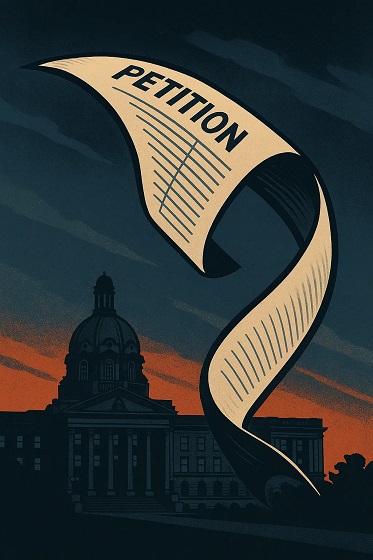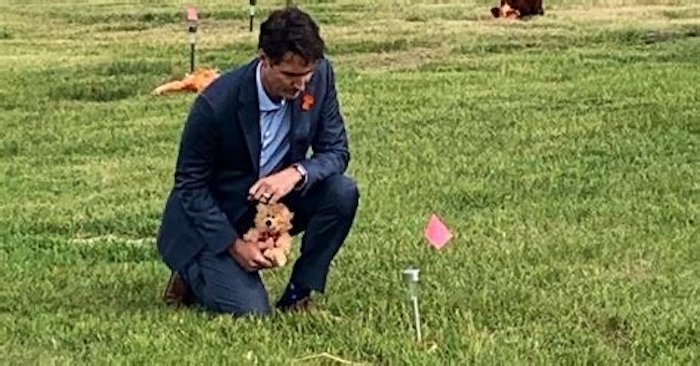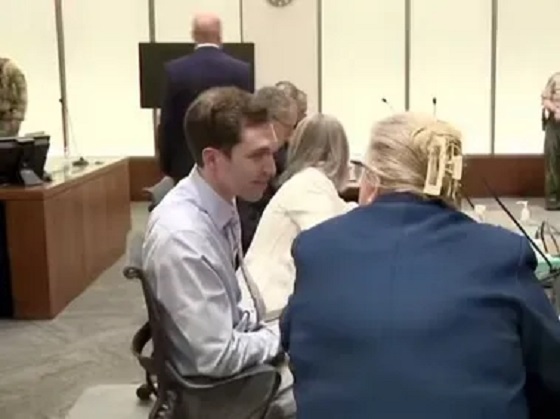Alberta
Danielle Smith vows to fight Trudeau’s ‘unconstitutional’ plan to ban gas-powered cars
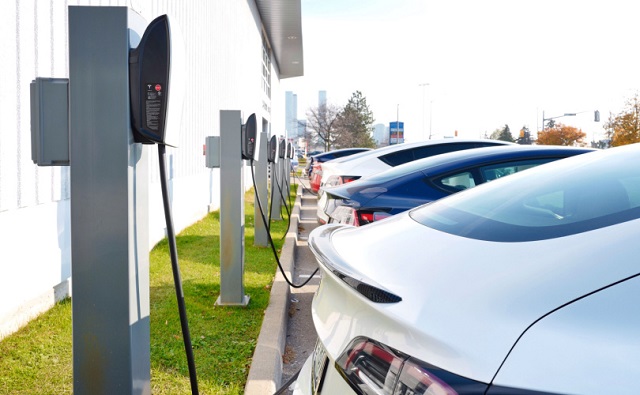
From LifeSiteNews
Alberta’s premier called a federal government directive that all new vehicles are electric by 2035 ‘a disaster.’
Alberta Premier Danielle Smith made it crystal clear that she intends to fight with “everything” at her disposal what she called an “unconstitutional” new federal government mandate that all new cars and trucks by 2035 be electric, which would in effect ban the sale of new gasoline- or diesel- only powered vehicles after that year.
“The Government of Alberta will do everything within its legal jurisdiction to thwart implementation of these unconstitutional regulations in our province,” Smith said in a statement yesterday on the EV mandate that was posted to X (formerly Twitter).
“The sheer hypocrisy of this announcement is astounding. To date, the federal government’s EV approach has been a disaster.”
On Tuesday, Canadian Environment Minister Steven Guilbeault announced the “Electric Vehicle Availability Standard.” This is a plan that will try and mandate more EV or so-called “zero-emission vehicles” (ZEV) sales via increasing targets per year.
Starting in 2026, the federal government will mandate that 20% of all new cars or trucks are ZEV. That number will move to 60% by 2030 and to 100% by 2035. So-called cars that qualify under the new rules are battery electric, plug-in hybrid, or hydrogen fuel cars.
This is not the first time Smith has called out federal EV mandates. Early this year, she blasted what was then a Trudeau government proposal to ban new sales of gas-powered cars after 2035. She called it an attack on her province’s oil and gas industry.
Trudeau’s war on the internal combustion engine comes despite the fact Canada has the third largest oil reserves in the world, which is produced ethically, unlike in other nations.
Electric cars cost thousands more to make and buy, are not suited to Canada’s cold climate, offer poor range and long charging times (especially in cold weather), and have batteries that take tremendous resources to make and are hard to recycle.
A recent report from the Western Standard documents how one Alberta couple found out the hard way that going EV does save not time or money.
Trudeau’s EV mandates have also been called out by the automotive industry in Canada. The Canadian Vehicle Manufacturers’ Association said in response to the new EV mandate that forcing people to buy EVs will “disproportionately impact households living in rural and northern communities that may have lower access to public charging infrastructure.”
“In addition, northern communities are expected to face more difficulties with the transition to EVs due to prolonged periods of cold temperatures that may affect the range of battery-powered electric vehicles.”
Conservative Party of Canada leader Pierre Poilievre said he would overturn Trudeau’s “Draconian” EV mandate should he win the next election and his party form government.
Smith warns power grids won’t be able to handle extra pressure of EVs
Smith noted that when it comes to Trudeau’s EV mandate, “Ottawa is trying to force increased demands on the electricity grid while simultaneously weakening Alberta’s and other provinces’ grids through their federal electricity regulations.”
“Our electric grids are not equipped to handle the massive demand surge that a forced full-scale transition to EVs would need to accommodate the delusional timelines in Ottawa’s regulations, and the federal government has not provided remotely enough financial assistance to assist provincial grids to meet this mandated electricity demand,” she noted.
Smith was clear that while the Alberta government “supports reducing emissions from the transportation sector,” it also supports choice when it comes to what kind of car or truck a person wants to buy.
She said any new rules should be led by “consumers and businesses” and not by government decree.
“The federal government has no legal or moral authority to tell Albertans what vehicles they can and cannot buy,” she said.
“The federal government should rein back its failed command economy tactics and work with us on a consumer-based market approach that is achievable and doesn’t hurt people.”
Smith then took a shot at the Trudeau Liberals and its lack of a plan when it comes to supporting the power grid.
“Not only are there not enough electric vehicle chargers, Ottawa doesn’t even know where EV chargers are needed. The federal government will fail to hit its target even where it has complete discretion, and yet it plans to mandate similar targets on consumers throughout all of Canada,” she said.
“Although it seems rather obvious to say, emissions targets and regulations must be realistic, achievable, and cannot result in multiple severe harms to millions of Canadians. A federal government that can’t transition its own fleet to EVs should not be telling Albertans and Canadians to do what even it is unable to do.”
Since taking office in 2015, Trudeau has continued to push a radical environmental agenda similar to the agendas being pushed the World Economic Forum’s “Great Reset” and the United Nations “Sustainable Development Goals.”
The reduction and eventual elimination of the use of so-called “fossil fuels” and a transition to unreliable “green” energy has also been pushed by the World Economic Forum (WEF) – the globalist group behind the socialist “Great Reset” agenda – an organization in which Trudeau and some of his cabinet are involved.
A June 2017 peer-reviewed study by two scientists and a veteran statistician confirmed that most of the recent global warming data have been “fabricated by climate scientists to make it look more frightening.”
There have been two recent court rulings that have dealt a blow to Trudeau’s environmental laws.
The most recent was the Federal Court of Canada on November 16 overturned the Trudeau government’s ban on single-use plastic, calling it “unreasonable and unconstitutional.”
The second ruling comes after Canada’s Supreme Court recently sided in favor of provincial autonomy when it comes to natural resources. The Supreme Court recently ruled that Trudeau’s law, C-69, dubbed the “no-more pipelines” bill, is “mostly unconstitutional.” This was a huge win for Alberta and Saskatchewan, which challenged the law in court. The decision returned authority over the pipelines to provincial governments, meaning oil and gas projects headed up by the provinces should be allowed to proceed without federal intrusion.
The Trudeau government, however, seems insistent on defying the recent rulings by pushing forward with its various regulations.
Alberta
Danielle Smith slams Skate Canada for stopping events in Alberta over ban on men in women’s sports

From LifeSiteNews
The Alberta premier has denounced Skate Canada as ‘disgraceful’ for refusing to host events in the province because of a ban on ‘transgender’ men in women’s sports.
Alberta Premier Danielle Smith has demanded an apology after Skate Canada refused to continue holding events in Alberta.
In a December 16 post on X, Smith denounced Skate Canada’s recent decision to stop holding competitions in Alberta due to a provincial law keeping gender-confused men from competing in women’s sports.
“Women and girls have the right to play competitive sports in a safe and fair environment against other biological females,” Smith declared. “This view is held by a vast majority of Albertans and Canadians. It is also common sense and common decency.”
Women and girls have the right to play competitive sports in a safe and fair environment against other biological females.
This view is held by a vast majority of Albertans and Canadians. It is also common sense and common decency.
Skate Canada‘s refusal to hold events in… pic.twitter.com/n4vbkTx6B0
— Danielle Smith (@ABDanielleSmith) December 16, 2025
“Skate Canada‘s refusal to hold events in Alberta because we choose to protect women and girls in sport is disgraceful,” she declared.
“We expect they will apologize and adjust their policies once they realize they are not only compromising the fairness and safety of their athletes, but are also offside with the international community, including the International Olympic Committee, which is moving in the same direction as Alberta,” Smith continued.
Earlier this week, Skate Canada announced their decision in a statement to CBC News, saying, “Following a careful assessment of Alberta’s Fairness and Safety in Sport Act, Skate Canada has determined that we are unable to host events in the province while maintaining our national standards for safe and inclusive sport.”
Under Alberta’s Fairness and Safety in Sport Act, passed last December, biological men who claim to be women are prevented from competing in women’s sports.
Notably, Skate Canada’s statement failed to address safety and fairness concerns for women who are forced to compete against stronger, and sometimes violent, male competitors who claim to be women.
Under their 2023 policy, Skate Canada states “skaters in domestic events sanctioned by Skate Canada who identify as trans are able to participate in the gender category in which they identify.”
While Skate Canada maintains that gender-confused men should compete against women, the International Olympic Committee is reportedly moving to ban gender-confused men from women’s Olympic sports.
The move comes after studies have repeatedly revealed what almost everyone already knew was true, namely that males have a considerable innate advantage over women in athletics.
Indeed, a recent study published in Sports Medicine found that a year of “transgender” hormone drugs results in “very modest changes” in the inherent strength advantages of men.
Additionally, male athletes competing in women’s sports are known to be violent, especially toward female athletes who oppose their dominance in women’s sports.
Last August, Albertan male powerlifter “Anne” Andres was suspended for six months after a slew of death threats and harassments against his female competitors.
In February, Andres ranted about why men should be able to compete in women’s competitions, calling for “the Ontario lifter” who opposes this, apparently referring to powerlifter April Hutchinson, to “die painfully.”
Interestingly, while Andres was suspended for six months for issuing death threats, Hutchinson was suspended for two years after publicly condemning him for stealing victories from women and then mocking his female competitors on social media. Her suspension was later reduced to a year.
Alberta
Alberta’s huge oil sands reserves dwarf U.S. shale

From the Canadian Energy Centre
By Will Gibson
Oil sands could maintain current production rates for more than 140 years
Investor interest in Canadian oil producers, primarily in the Alberta oil sands, has picked up, and not only because of expanded export capacity from the Trans Mountain pipeline.
Enverus Intelligence Research says the real draw — and a major factor behind oil sands equities outperforming U.S. peers by about 40 per cent since January 2024 — is the resource Trans Mountain helps unlock.
Alberta’s oil sands contain 167 billion barrels of reserves, nearly four times the volume in the United States.
Today’s oil sands operators hold more than twice the available high-quality resources compared to U.S. shale producers, Enverus reports.
“It’s a huge number — 167 billion barrels — when Alberta only produces about three million barrels a day right now,” said Mike Verney, executive vice-president at McDaniel & Associates, which earlier this year updated the province’s oil and gas reserves on behalf of the Alberta Energy Regulator.
Already fourth in the world, the assessment found Alberta’s oil reserves increased by seven billion barrels.
Verney said the rise in reserves despite record production is in part a result of improved processes and technology.
“Oil sands companies can produce for decades at the same economic threshold as they do today. That’s a great place to be,” said Michael Berger, a senior analyst with Enverus.
BMO Capital Markets estimates that Alberta’s oil sands reserves could maintain current production rates for more than 140 years.
The long-term picture looks different south of the border.
The U.S. Energy Information Administration projects that American production will peak before 2030 and enter a long period of decline.
Having a lasting stable source of supply is important as world oil demand is expected to remain strong for decades to come.
This is particularly true in Asia, the target market for oil exports off Canada’s West Coast.
The International Energy Agency (IEA) projects oil demand in the Asia-Pacific region will go from 35 million barrels per day in 2024 to 41 million barrels per day in 2050.
The growing appeal of Alberta oil in Asian markets shows up not only in expanded Trans Mountain shipments, but also in Canadian crude being “re-exported” from U.S. Gulf Coast terminals.
According to RBN Energy, Asian buyers – primarily in China – are now the main non-U.S. buyers from Trans Mountain, while India dominates purchases of re-exports from the U.S. Gulf Coast. .
BMO said the oil sands offers advantages both in steady supply and lower overall environmental impacts.
“Not only is the resulting stability ideally suited to backfill anticipated declines in world oil supply, but the long-term physical footprint may also be meaningfully lower given large-scale concentrated emissions, high water recycling rates and low well declines,” BMO analysts said.
-

 Daily Caller2 days ago
Daily Caller2 days agoParis Climate Deal Now Decade-Old Disaster
-

 Business1 day ago
Business1 day agoOttawa Pretends To Pivot But Keeps Spending Like Trudeau
-

 Indigenous2 days ago
Indigenous2 days agoResidential school burials controversy continues to fuel wave of church arsons, new data suggests
-

 Alberta2 days ago
Alberta2 days agoAlberta’s huge oil sands reserves dwarf U.S. shale
-

 International2 days ago
International2 days agoFBI didn’t think it had cause to raid Trump but DOJ did it anyway
-
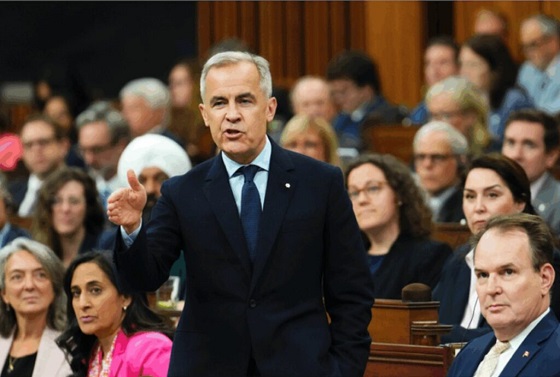
 Energy1 day ago
Energy1 day agoLiberals Twisted Themselves Into Pretzels Over Their Own Pipeline MOU
-

 Censorship Industrial Complex1 day ago
Censorship Industrial Complex1 day agoHow Wikipedia Got Captured: Leftist Editors & Foreign Influence On Internet’s Biggest Source of Info
-
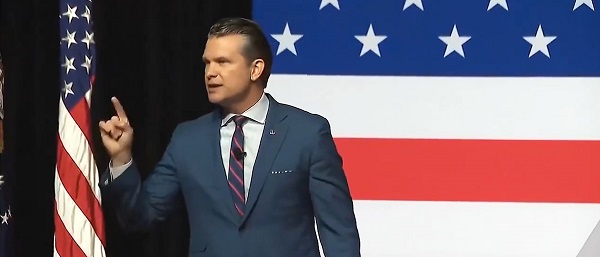
 Daily Caller2 days ago
Daily Caller2 days agoHegseth Planning Huge Shakeup Of Top Military Command: REPORT



